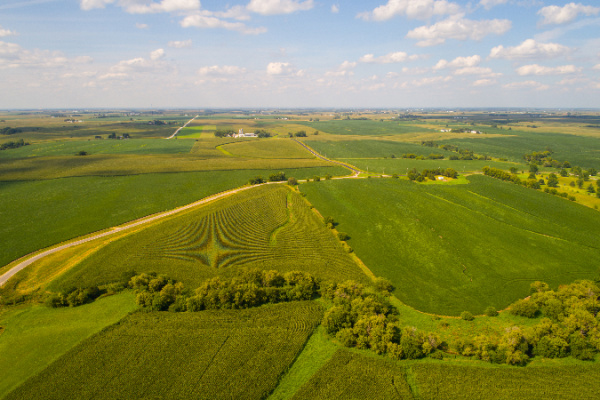How Pricey Are Cash Rents?

Like all expenses, cash rents have also jumped in recent years. In Indiana, cash rental rates jumped $25 per acre in 2022. At $252 per acre, rates also passed the previous highs, $232 per acre, hit during the previous farm income boom (2014).
With per-acre cash rents at all-time highs, it’s worth considering how pricey current rents are. For example, budgeted yields have increased since the 2014 highs. Also, it’s helpful to consider the expense in terms of the overall revenue picture.
Figure 1 shows the per bushel rents for farmland, which account for the changes in productivity. By this metric, cash rental rates have yet to return to 2013 highs. At $252 per acre and a budgeted yield of 191 bushels, per bushel rent for average-quality Indiana farmland was $1.32 in 2022. This compares to a per bushel rent of $1.43 in 2013. That said, rents today have risen considerably when one considers that in 2019, they averaged $1.18 per bushel.

Figure 1. Cash Rent Per Bushel of Yield. Average-Quality Indian Farmland, 1990-2022.
Another way to look at the relative price of farmland rent is to consider it in the context of the gross revenue generated by farmland. This is illustrated in Figure 2, which shows cash rental rates for average-quality farmland as a share of budgeted gross revenue. In 2022, cash rent accounted for 24% of the total budgeted revenue, up from 23% in 2021.
Historically, cash rents hit a low of 18% of budgeted revenue in 2012. Shortly after, cash rents increased sharply (Figure 2). On the other extreme, the measure reached 38% in 2014. By 2015, cash rents fell sharply, and cash rent’s burden began to shrink. Since 1976, the cash rental rate for average-quality Indiana farmland has averaged 33% of budgeted revenue.
While the data are rarely at the average, the average is a helpful rule of thumb. As cash rents account for less than one-third of budgeted revenue, the upward pressure on rental rates starts to build. Conversely, as rents begin to exceed the long-run average, downward pressure begins to build. Again, this is not a perfect metric, but worth keeping in mind.

Figure 2. Rent as a Percentage of Gross Revenue, Average-Quality Indiana Farmland
Wrapping It Up
Despite the sticker shock from all-time high prices, productivity gains and the overall revenue situation show that current cash rents aren’t nearly as high as they were during the last farm income boom. Will this result in more upward pressure on cash rental rates headed into 2023? It will be important for farm managers to keep an eye on several factors.
Still curious? Read the Premium version of this article here.